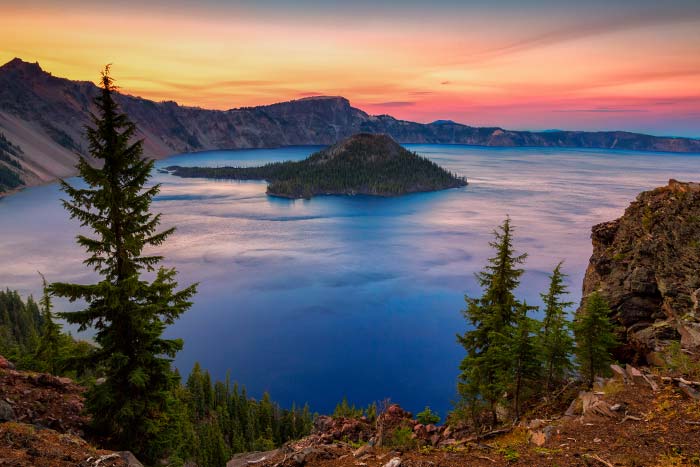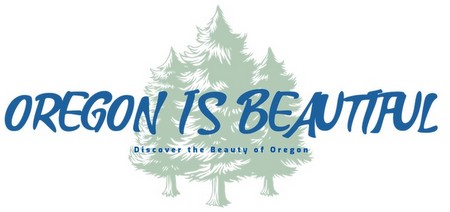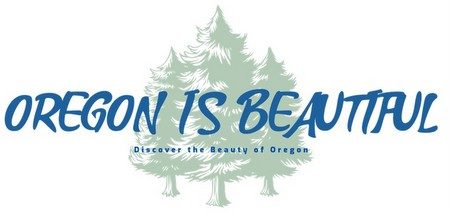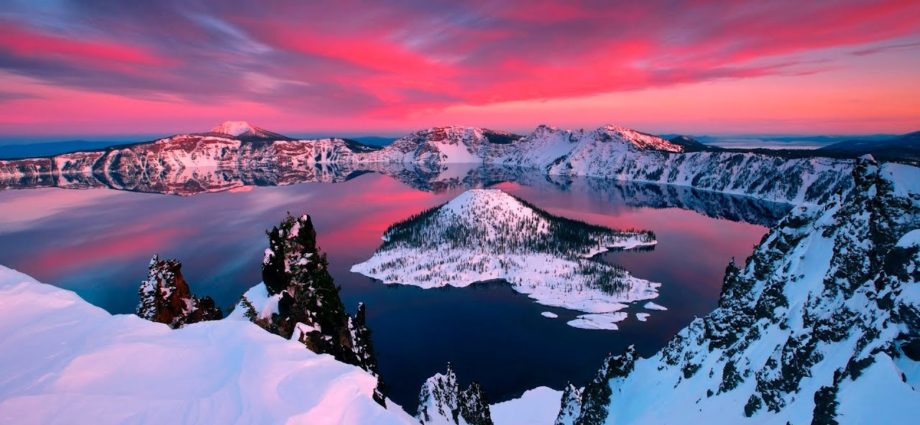If you’ve lived in Oregon for any length of time, or have traveled here in the past, it’s easy to see that Oregon has a “volcanic legacy” because there are volcanoes across the state.
In this article we will provide you with a list of Oregon Volcano’s and tips on when to visit them so that you can enjoy them for yourself.

Crater Lake – Oregon’s Most Iconic Volcano
One of the most iconic volcano’s in the state of Oregon is Crater Lake. As of 2019 it has the deepest lake in the United States (1,943 feet) and a volcano that although it last thousands of years ago it’s still considered to be active and with the occasional earthquakes at the site are a reminder that this “sleeping giant” of a volcano could one day wake back up and surprises us all.
Summertime is one of the best times of year to visit Crater Lake because there won’t be any snow on the ground and there’s plenty of things to do in the area. Just make sure you bring a warm jacket though because the weather at Crater Lake can change at a moments notice, even during the summer months and you could find yourself in the middle of a summer snow shower!
Complete List Of Oregon Volcano’s
| Bachelor (stratovolcano) |
Mount Bachelor (formerly known as Bachelor Butte) in central Oregaon is a symmetrical stratovolcano, which is part of a 25 km long volcanic chain SE of South Sister. The chain is aligned N-S and consists of the main volcano of Mt Bachelor itself, cinder cones, small shield… [more] |
|
|
|
| Belknap (shield volcanoes) |
Belknap Crater volcano is located near McKenzie Pass, north of the Three Sisters volcanoes in Central Oregon. It is the center and source of one of the largest number of geologically recent eruptions in the Cascade Range. It was very active between about 3000 and 1500 years ago. … [more] |
|
|
|
| Blue Lake Crater (stratovolcano) |
Blue Lake is a series of at least 3 overlapping explosion craters (maars), located along a NE trend slightly east of the crest of the Cascade Range. The best-known crater, Blue Lake Crater contains a blue lake (800m x 300m) and is probably the youngest. It formed by an eruption a… [more] |
|
|
|
| Broken Top (stratovolcano) |
Broken Top in the Three Sisters Wilderness, Oregon, is, as the name suggests, the heavily eroded top of a probably extinct stratovolcano. [more] |
|
|
|
| Cinnamon Butte (cinder cones) |
Cinnamon Butte is one of a group of 3 young cinder cones long a WNW-ESE line immediately west of the Cascade crest and NE of Diamond Lake in Oregon, USA. The other two cones are Thirsty Point and Kelsay Point. [more] |
| Devils Garden (volcanic field) |
Devils Garden volcanic field in central Oregon, east of the Cascade Range, is the NW-most of a group of 3 young basaltic lava fields SE of Newberry volcano. It covers 117 sq km and consists of fissure vents and lava flows. [more] |
|
|
|
| Devis Lake (volcanic field) |
Davis Lake area in Oregon, USA, is a volcanic field with 3 cinder cones and lava flows of three cinder cones and associated lava flows. [more] |
|
|
|
| Diamond Craters (volcanic field) |
Diamond Craters is a 60 sq km volcanic field in SE Oregon, 11 km east of highway 205 and 64 km (40 miles) southeast of the town of Burns. It consists of cinder cones, maars (explosion craters) and lava flows. Diamond Craters were named after the Diamond Ranch, established i… [more] |
|
|
|
| Four Craters (volcanic field) |
The Four Craters lava field, along with Devils Garden and Squaw Ridge, is the SE-most of a group of 3 basaltic lava fields SE of Newberry volcano in the High Lava Plains of central Oregon. The Four Craters lava field contains 4 spatter cones along a 4-km-long NW-SE-trendin… [more] |
|
|
|
| Jefferson (stratovolcano) |
Mt Jefferson volcano, one of the lesser known Cascade volcanoes, is the second highest mountain in Oregon. Although it is deeply eroded and has probably not erupted for at least about 1000 years, it is still considered active. [more] |
|
|
|
| Jordan Craters (volcanic field) |
Jordan Craters in SE Oregon is a field of well-preserved basaltic lava flows and scoria cones covering 250 sq km. The last eruption took place at Coffeepot Crater at the NW end of the lava field about 3200 years ago and produced a lava flow covering 75 square km and containing 1…. [more] |
|
|
|
| Mount Hood (stratovolcano) |
Mt Hood 75 km ESE of Portland is Oregon’s highest peak and one of the most prominent of the Cascades volcanoes. It is probably the only volcano in Oregon which has erupted in historic times (last confirmed activity in 1865-66). Andesite-dacite lava domes form the glacially… [more] |
|
|
|
| Mount Washington (shield volcano) |
Mount Washington is a composite volcano in the Cascade Range of Oregon. The mountain dates to the Late Pleistocene. However, it does have a line of basaltic andesite spatter cones on its northeast flank which are approximately 1,330 years old according to carbon dating. The main … [more] |
|
|
|
| Newberry (shield volcano, caldera) |
Newberry volcano east of the Cascade Range in Oregon, is one of the largest volcanoes on the US mainland. It covers about 1600 km2 and contains a large caldera, Newberry Crater, that was created several 100,000 years ago by a series of devastating eruptions. The volcano las… [more] |
|
|
|
| North Sister (complex volcano) |
North Sister volcano, along with Middle and South Sister part of the Three Sisters Group in central Oregon Cascades. The group forms a prominent landmark in the Central Oregon Cascades. North Sister is the glacially eroded remnant of a andesitic-dacitic stratovolcano, expos… [more] |
|
|
|
| Sand Mountain (cinder cones) |
Sand Mountain is a cluster of 23 cinder cones NW of Mt Washington, Oregon. The youngest eruption took place to form Lost Lake cinder cone at the north end of the chain about 2000 years ago. [more] |
|
|
|
| South Sister (complex volcano) |
South Sister (also known as Charity) is the highest and youngest of the Three Sisters volcanic group in the central Cascades, Oregon. It dominates the landscape and is a popular destination for climbers and hikers. [more] |
|
|
|
| Squaw Ridge (lava field, shield volcano) |
The Squaw Ridge lava field, also known as the East lava field, together with Devils Garden and Four Craters is the middle of a group of 3 young basaltic fields located in the High Lava Plains SE of Newberry volcano. It forms a small shield volcano from which lava flows have flowe… [more] |
Source – Volcanodiscovery.com
Where Is Your Favorite Volcano In Oregon?
Do you have a favorite volcano in Oregon? Feel free to leave us a comment below or share a picture with us on our Facebook page by clicking here!

[instagram-feed]

